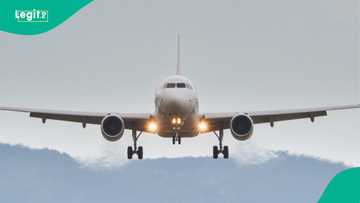Air India Shares Fuel Switch Findings Following Deadly 787 Crash Investigation
- Air India announced the completion of precautionary inspections on fuel switch locks across its Boeing 787 and 737 fleet, with no faults found
- The investigation into a fatal crash involving an Air India 787 jet has zeroed in on the aircraft’s fuel control switches, which reportedly shifted unexpectedly during takeoff
- India’s aviation regulator and foreign carriers have since followed suit with similar checks, as global scrutiny of Boeing’s fuel switch mechanisms intensifies
Air India confirmed on Tuesday that it had completed precautionary inspections of the fuel control switch locking mechanisms on all its Boeing 787 and 737 aircraft, with no issues found.
The checks were conducted voluntarily beginning 12 July following regulatory advisories sparked by the investigation into a deadly crash involving one of its Boeing 787 jetliners.

Source: Twitter
Fuel control switches under scrutiny
The probe, led by India’s Aircraft Accident Investigation Bureau (AAIB), is currently focused on the aircraft’s fuel control switches, critical components that regulate fuel flow to the engines.
These switches are designed to allow pilots to initiate or shut down engines on the ground, and manually manage fuel supply in mid-air emergencies.
According to a preliminary AAIB report released earlier this month, the switches on the ill-fated flight appeared to have flipped nearly simultaneously from ‘run’ to ‘cutoff’ shortly after takeoff.
This sudden change caused both engines to lose power. The crash claimed 241 of the 242 people onboard and killed 19 individuals on the ground.
The report referenced a 2018 Federal Aviation Administration (FAA) advisory, which had urged operators of several Boeing models, including the 787, to inspect the locking mechanisms on fuel cutoff switches to mitigate the risk of unintended activation.
Boeing and the FAA have since privately maintained that the fuel switch locks on their aircraft are safe, according to a Reuters report.
Regulators and airlines respond
Following Air India’s voluntary inspections, India’s aviation regulator directed all domestic carriers to carry out similar checks. This move prompted several international airlines and regulators to follow suit, further amplifying the scrutiny surrounding Boeing’s switch designs.
Reuters also reported last week that cockpit recordings from the Ahmedabad to London Gatwick flight indicated the captain may have manually cut fuel to the engines. However, the AAIB stressed it was “too early to draw any conclusions.”
Air India continues to operate its Boeing 787 twin-aisle jets for long-haul routes, while its budget subsidiary, Air India Express, runs the single-aisle Boeing 737s. The AAIB is expected to release its final report on the crash within a year of the incident.

Source: Getty Images
Fuel to Air India jet engines cut off
Legit.ng earlier reported that Fuel control switches to the engines of an Air India flight that crashed shortly after takeoff, killing 260 people, were moved from the "run" to the "cutoff" position moments before impact, a preliminary investigation report said early Saturday.
The report, issued by India's Aircraft Accident Investigation Bureau, did not offer any conclusions or apportion blame for the June 12 disaster, but indicated that one pilot asked the other why he cut off fuel, and the second pilot responded that he had not.

Read also
Investigators discover pilots allegedly shut off airplane engine by mistake in crash that killed 179
The Boeing 787-8 Dreamliner was headed from Ahmedabad in western India to London when it crashed, killing all but one of the 242 people on board as well as 19 people on the ground.
Source: Legit.ng




